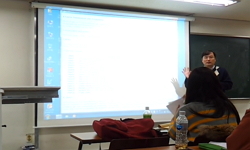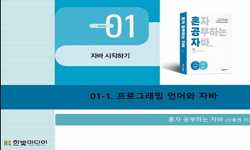Purpose:Glutathione S-transferase (GST) is a polymorphic supergene family of detoxification enzymes that are involved in the metabolism of numerous diseases. Several allelic variants of GSTs show impaired enzyme activity and are suspected to increase ...
http://chineseinput.net/에서 pinyin(병음)방식으로 중국어를 변환할 수 있습니다.
변환된 중국어를 복사하여 사용하시면 됩니다.
- 中文 을 입력하시려면 zhongwen을 입력하시고 space를누르시면됩니다.
- 北京 을 입력하시려면 beijing을 입력하시고 space를 누르시면 됩니다.


한국인 신생아 황달과 Glutathione S-transferase 다형성에 관한 연구 = Glutathione S-transferase polymorphism of neonatal hyperbilirubinemia in Korean neonates
한글로보기https://www.riss.kr/link?id=A104550092
- 저자
- 발행기관
- 학술지명
- 권호사항
-
발행연도
2008
-
작성언어
Korean
- 주제어
-
등재정보
KCI등재,SCOPUS,ESCI
-
자료형태
학술저널
- 발행기관 URL
-
수록면
262-266(5쪽)
-
KCI 피인용횟수
1
- DOI식별코드
- 제공처
-
0
상세조회 -
0
다운로드
부가정보
다국어 초록 (Multilingual Abstract)
Methods:Genomic DNA was isolated from 88 patients and 186 healthy controls. The genotypes were analyzed by polymerase chain reaction (PCR).
Results: The overall frequency of the GSTM1 null was lower in patients compared to controls (P=0.0187, Odds ratio (OR) =0.52, 95% confidence interval (CI), 0.31-0.88). Also, the GSTT1 null was lower in patients compared to controls (P=0.0014, OR=0.41, 95% CI=0.24-0.70). Moreover, the frequency of the null type of both, in the combination of GSTM1 and GSTT1, was significantly reduced in jaundiced patients (P=0.0008, OR=0.31, 95% CI=0.17-0.61).
Conclusion:We hypothesized that GSTM1 and GSTT1 might be associated with neonatal hyperbilirubinemia. However, the GSTT1 and GSTM1 null type was reduced in patients. Therefore the null GSTT1, null GSTM1, and null type of both in the combination of GSTM1 and GSTT1 may be not a risk factor of neonatal jaundice. (Korean J Pediatr 2008;51:262-266)
Purpose:Glutathione S-transferase (GST) is a polymorphic supergene family of detoxification enzymes that are involved in the metabolism of numerous diseases. Several allelic variants of GSTs show impaired enzyme activity and are suspected to increase the susceptibility to diseases. Bilirubin is bound efficiently by GST members. The most commonly expressed gene in the liver is GSTM1, and GSTT1 is expressed predominantly in the liver and kidneys. To ascertain the relationship between GST and neonatal hyperbilirubinemia, the distribution of the polymorphisms of GSTT1 and GSTM1 were investigated in this study.
Methods:Genomic DNA was isolated from 88 patients and 186 healthy controls. The genotypes were analyzed by polymerase chain reaction (PCR).
Results: The overall frequency of the GSTM1 null was lower in patients compared to controls (P=0.0187, Odds ratio (OR) =0.52, 95% confidence interval (CI), 0.31-0.88). Also, the GSTT1 null was lower in patients compared to controls (P=0.0014, OR=0.41, 95% CI=0.24-0.70). Moreover, the frequency of the null type of both, in the combination of GSTM1 and GSTT1, was significantly reduced in jaundiced patients (P=0.0008, OR=0.31, 95% CI=0.17-0.61).
Conclusion:We hypothesized that GSTM1 and GSTT1 might be associated with neonatal hyperbilirubinemia. However, the GSTT1 and GSTM1 null type was reduced in patients. Therefore the null GSTT1, null GSTM1, and null type of both in the combination of GSTM1 and GSTT1 may be not a risk factor of neonatal jaundice. (Korean J Pediatr 2008;51:262-266)
다국어 초록 (Multilingual Abstract)
Methods:Genomic DNA was isolated from 88 patients and 186 healthy controls. The genotypes were analyzed by polymerase chain reaction (PCR).
Results: The overall frequency of the GSTM1 null was lower in patients compared to controls (P=0.0187, Odds ratio (OR) =0.52, 95% confidence interval (CI), 0.31-0.88). Also, the GSTT1 null was lower in patients compared to controls (P=0.0014, OR=0.41, 95% CI=0.24-0.70). Moreover, the frequency of the null type of both, in the combination of GSTM1 and GSTT1, was significantly reduced in jaundiced patients (P=0.0008, OR=0.31, 95% CI=0.17-0.61).
Conclusion:We hypothesized that GSTM1 and GSTT1 might be associated with neonatal hyperbilirubinemia. However, the GSTT1 and GSTM1 null type was reduced in patients. Therefore the null GSTT1, null GSTM1, and null type of both in the combination of GSTM1 and GSTT1 may be not a risk factor of neonatal jaundice. (Korean J Pediatr 2008;51:262-266)
Purpose:Glutathione S-transferase (GST) is a polymorphic supergene family of detoxification enzymes that are involved in the metabolism of numerous diseases. Several allelic variants of GSTs show impaired enzyme activity and are suspected to increase ...
Purpose:Glutathione S-transferase (GST) is a polymorphic supergene family of detoxification enzymes that are involved in the metabolism of numerous diseases. Several allelic variants of GSTs show impaired enzyme activity and are suspected to increase the susceptibility to diseases. Bilirubin is bound efficiently by GST members. The most commonly expressed gene in the liver is GSTM1, and GSTT1 is expressed predominantly in the liver and kidneys. To ascertain the relationship between GST and neonatal hyperbilirubinemia, the distribution of the polymorphisms of GSTT1 and GSTM1 were investigated in this study.
Methods:Genomic DNA was isolated from 88 patients and 186 healthy controls. The genotypes were analyzed by polymerase chain reaction (PCR).
Results: The overall frequency of the GSTM1 null was lower in patients compared to controls (P=0.0187, Odds ratio (OR) =0.52, 95% confidence interval (CI), 0.31-0.88). Also, the GSTT1 null was lower in patients compared to controls (P=0.0014, OR=0.41, 95% CI=0.24-0.70). Moreover, the frequency of the null type of both, in the combination of GSTM1 and GSTT1, was significantly reduced in jaundiced patients (P=0.0008, OR=0.31, 95% CI=0.17-0.61).
Conclusion:We hypothesized that GSTM1 and GSTT1 might be associated with neonatal hyperbilirubinemia. However, the GSTT1 and GSTM1 null type was reduced in patients. Therefore the null GSTT1, null GSTM1, and null type of both in the combination of GSTM1 and GSTT1 may be not a risk factor of neonatal jaundice. (Korean J Pediatr 2008;51:262-266)
참고문헌 (Reference)
1 Hayes JD, "The glutathione S-transferase supergene family: regulation of GST and the contribution of the isoenzymes to cancer chemoprotection and drug resistance" 30 : 445-600, 1995
2 Nazar-Stewart V, "The glutathione S-transferase mu polymorphism as a marker for susceptibility to lung carcinoma" 53 : 2313-2318, 1993
3 Nielsen HE, "Risk factors and sib correlation in physiological neonatal jaundice" 76 : 504-511, 1987
4 Khoury MJ, "Recurrence risk of neonatal hyperbilirubinemia in siblings" 142 : 1065-1069, 1988
5 Mohammadzadeh Ghobadloo S, "Polymorphisms of glutathione S-transferase M1, T1, and P1 in patients with HBV-related liver cirrhosis, chronic hepatitis, and normal carriers" 39 : 46-49, 2006
6 Ramsay HM, "Polymorphisms in glutathione S-transferases are associated with altered risk of nonmelanoma skin cancer in renal transplant recipients: a preliminary analysis" 117 : 251-255, 2001
7 Harada S, "Liver glutathione S-transferase polymorphism in Japanese and its pharmacogenetic importance" 75 : 322-325, 1987
8 Pemble S, "Human glutathione S-transferase theta (GSTT1): cDNA cloning and the characterization of a genetic polymorphism" 300 : 271-276, 1994
9 Whalen R, "Human Glutathione S-transferases" 18 : 345-358, 1998
10 Seidegard J, "Hereditary differences in the expression of the human glutathione transferase active on trans-stilbene oxide are due to a gene deletion" 85 : 7293-7297, 1988
1 Hayes JD, "The glutathione S-transferase supergene family: regulation of GST and the contribution of the isoenzymes to cancer chemoprotection and drug resistance" 30 : 445-600, 1995
2 Nazar-Stewart V, "The glutathione S-transferase mu polymorphism as a marker for susceptibility to lung carcinoma" 53 : 2313-2318, 1993
3 Nielsen HE, "Risk factors and sib correlation in physiological neonatal jaundice" 76 : 504-511, 1987
4 Khoury MJ, "Recurrence risk of neonatal hyperbilirubinemia in siblings" 142 : 1065-1069, 1988
5 Mohammadzadeh Ghobadloo S, "Polymorphisms of glutathione S-transferase M1, T1, and P1 in patients with HBV-related liver cirrhosis, chronic hepatitis, and normal carriers" 39 : 46-49, 2006
6 Ramsay HM, "Polymorphisms in glutathione S-transferases are associated with altered risk of nonmelanoma skin cancer in renal transplant recipients: a preliminary analysis" 117 : 251-255, 2001
7 Harada S, "Liver glutathione S-transferase polymorphism in Japanese and its pharmacogenetic importance" 75 : 322-325, 1987
8 Pemble S, "Human glutathione S-transferase theta (GSTT1): cDNA cloning and the characterization of a genetic polymorphism" 300 : 271-276, 1994
9 Whalen R, "Human Glutathione S-transferases" 18 : 345-358, 1998
10 Seidegard J, "Hereditary differences in the expression of the human glutathione transferase active on trans-stilbene oxide are due to a gene deletion" 85 : 7293-7297, 1988
11 Harrison DJ, "Glutathione S-transferases in alcoholic liver disease" 31 : 909-912, 1990
12 Hayes JD, "Glutathione S-transferase polymorphisms and their biological consequences" 61 : 154-166, 2000
13 Kang TY, "Glutathione S-transferase gene polymorphisms and systemic lupus erythematosus" 10 : 234-242, 2003
14 Groppi A, "Glutathione S-transferase class µ in French cirrhotic patients" 87 : 628-630, 1991
15 Hong SH, "Glutathione S-transferase (GSTM1, GSTT1 and GSTP1) and N-acetyltransferase 2 polymorphisms and risk of gastric cancer" 39 : 135-140, 2006
16 Sgambato A, "Glutathione S-transferase (GST) polymorphisms as risk factors for cancer in a highly homogeneous population from southern Italy" 22 : 3647-3652, 2002
17 Bell DA, "Genetic risk and carcinogen exposure: a common inherited defect of the carcinogen-metabolism gene glutathione S-transferase M1 (GSTM1) that increase susceptibility to bladder cancer" 85 : 1159-1164, 1993
18 Yang P, "Genetic determinants of lung cancer short- term survival: the role of glutathione-related gene" 35 : 221-229, 2002
19 Wiencke JK, "Gene deletion of glutathione S-transferase θ: correlation with induced genetic damage and potential role in endogenous mutagenesis" 4 : 253-259, 1995
20 Cho HJ, "GSTM1, GSTT1 and GSTP1 polymorphisms in the Korean population" 20 : 1089-1092, 2005
21 Davies MH, "GSTM1 null polymorphism at the glutathione S-transferase M1 locus: Phenotype and genotype studies in patients with primary biliary cirrhosis" 34 : 549-553, 1993
22 Engracia V, "Expression of class µ glutathione S- transferase in human liver and its association with hepatopathies" 123 : 257-260, 2003
23 Horiguchi T, "Ethnic differences in neonatal jaundice : Comparison of Japanese and Caucasian newborn infants" 121 : 71-74, 1975
24 Linn S, "Epidemiology of neonatal hyperbilirubinemia" 75 : 770-774, 1985
25 Wang X, "Bilirubin metabolism: Applied physiology" 16 : 70-74, 2006
26 Morinobu A, "Association of the glutathione S-transferase M1 homozygous null genotype with susceptibility to Sjögren's syndrome in Japanese individuals" 42 : 2612-2615, 1999
27 Luo JC, "Abnormal liver function associated with occupational exposure to dimethylformamide and glutathione S-transferase polymorphisms" 10 : 467-474, 2005
28 Abdel-Rahman SZ, "A multiplex PCR procedure for polymorphism analysis of GSTM1 and GSTT1 genes in population studies" 107 : 229-233, 1996
29 Park SK, "A case-control study of the association between glutathione S-trasferase (GST) M1 and T1 genetic polymorphism and breast cancer in Korean women" 31 : 635-662, 1999
동일학술지(권/호) 다른 논문
-
Utility of a forced expiratory flow of 25 to 75 percentas a predictor in children with asthma
- 대한소아청소년과학회
- 강정완
- 2008
- KCI등재,SCOPUS,ESCI
-
프래더 윌리 증후군의 유전학적 발병 기전에 따른 표현형 및성장 호르몬 치료 효과에 관한 연구
- 대한소아청소년과학회
- 배근욱
- 2008
- KCI등재,SCOPUS,ESCI
-
A case of lethal kwashiorkor caused by feeding only with cereal grain
- 대한소아청소년과학회
- 이현주
- 2008
- KCI등재,SCOPUS,ESCI
-
스테로이드 저항성 신증후군에서 cyclosporine 치료 반응 및 결과
- 대한소아청소년과학회
- 최형순
- 2008
- KCI등재,SCOPUS,ESCI
분석정보
인용정보 인용지수 설명보기
학술지 이력
| 연월일 | 이력구분 | 이력상세 | 등재구분 |
|---|---|---|---|
| 2023 | 평가예정 | 해외DB학술지평가 신청대상 (해외등재 학술지 평가) | |
| 2020-01-15 | 학술지명변경 | 한글명 : Korean Journal of Pediatrics -> Clinical and Experimental Pediatrics외국어명 : Korean Journal of Pediatrics -> Clinical and Experimental Pediatrics |  |
| 2020-01-01 | 평가 | 등재학술지 유지 (해외등재 학술지 평가) |  |
| 2019-07-16 | 학회명변경 | 한글명 : 대한소아과학회 -> 대한소아청소년과학회 |  |
| 2010-01-01 | 평가 | 등재학술지 유지 (등재유지) |  |
| 2009-01-30 | 학술지명변경 | 한글명 : 소아과 -> Korean Journal of Pediatrics |  |
| 2008-01-01 | 평가 | 등재학술지 유지 (등재유지) |  |
| 2006-01-01 | 평가 | 등재학술지 유지 (등재유지) |  |
| 2003-01-01 | 평가 | 등재학술지 선정 (등재후보2차) |  |
| 2002-01-01 | 평가 | 등재후보 1차 PASS (등재후보1차) |  |
| 2000-07-01 | 평가 | 등재후보학술지 선정 (신규평가) |  |
학술지 인용정보
| 기준연도 | WOS-KCI 통합IF(2년) | KCIF(2년) | KCIF(3년) |
|---|---|---|---|
| 2016 | 0.18 | 0.18 | 0.16 |
| KCIF(4년) | KCIF(5년) | 중심성지수(3년) | 즉시성지수 |
| 0.17 | 0.2 | 0.369 | 0.06 |




 ScienceON
ScienceON




